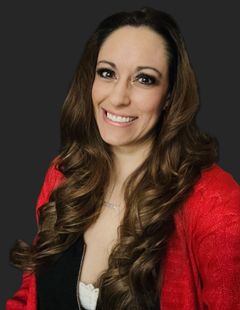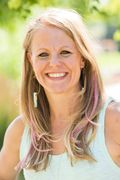In the upcoming full-day ACE Health and Fitness Summit: Coaching and Training Women, happening on May 19th, attendees will get the pleasure of learning from Keli Roberts, ACE Certified Personal Trainer, Health Coach, and Group Fitness Instructor.
Keli' session will be on "Better Biomechanics: Effective Training for the Female Body." This session will focus on smart strategies for training the upper and lower body while keeping the specific needs of women in mind.
Keli Roberts, a veteran in the health and exercise space, started her professional journey in 1986. One of the most significant evolutions Keli has witnessed in her almost 40-year career is related to the role women play in this industry and how they have experienced a dynamically shifting landscape as professionals and leaders.
In this interview, Keli shares how exercise professionals today need to be mindful of the unique needs our female clients have. She offers valuable advice to us through the meaningful lessons she’s learned in the past four decades.
Evolution of the Health & Exercise Profession
From the days of Jack LaLanne to modern day fitness apps, streaming services, and virtual coaching, the health and exercise industry continues to experience innovative methods to “get people moving”, and women are at the forefront. This wasn’t always the case. When asked what she feels is the biggest industry shift, Keli highlighted this historical perspective:
“As someone who has worked as an instructor and trainer since 1986, I’ve seen a large change in the role of women in fitness. In the group fitness space, women (and people in general) are more educated and knowledgeable. In the personal training environment women are taken more seriously. When I started training clients in 1991 after getting ACE certified as a trainer, the field was dominated by men. At that time, the weight room was male territory in many ways. There seemed to be an unspoken idea that we didn’t know about how to create great strength and conditioning programs. That we belonged in the group fitness room. And in the group fitness room… [there was a belief that] we jumped around to music and smiled and looked cute. With education came more respect.”
Women as leaders in this space have come far in gaining credibility and recognition for their contributions to the field’s evolutionary path. That said, female exercise professionals still experience challenges – even in this contemporary world.
“One I see most often, as a female health and exercise professional, is to be taken seriously,” says Keli. “This is true both as a trainer and group exercise instructor. It has changed over the years and is better than it used to be, but there is still room for improvement.”
For Keli, this not only means empowering herself, but it means empowering other females in our profession.
Empowering Our Female Clients
In addition to exploring various challenges female health and exercise professionals face, I asked Keli to share what she sees her female clients struggle with.
“Some of the challenges that female clients face are based in the idea that women can be trained the same as a man, when in fact, there are some significant differences,” says Keli. “Women face huge changes physiologically over their lifespan. Even simply from a hormonal standpoint. Most people/trainers aren’t aware of how to accommodate for these differences and develop programs suitable. Additionally, most research is performed on men, so it’s often hard to find the best information pertinent to a woman’s body and needs. It’s better than what it was a few years ago, but still not ideal.”
Her comments underscore the important need for any exercise professional to dig deeper into developing a robust understanding of the physiological shifts our female clients experience over the course of their lifetime. To encourage all of us, Keli notes four of the most important principles we need to apply in our work with these clients:
1. Hormonal differences, fluctuations, and changes with age.
2. Muscle fiber differences: Women have a higher percentage of slow twitch muscle fiber.
3. Fatigue resistance: Women have better fatigue resistance compared to men when it comes to muscle endurance due to both higher estrogen levels and the higher percentage of slow twitch muscle fibers.
4. Biomechanically women tend to have a wider pelvis which affects the Q-Angle, or the angle between the pelvis and knee/ankle. Also, posture can be affected by breast size. And, unfortunately, often taller women tend to slouch so as not to seem so tall or “imposing.”
Further, health and exercise professionals need to remain mindful of a woman’s ever-shifting needs, which vary based on things like age, pregnancy status, menopausal symptoms, and activity level.
Keli says “there’s a lot to learn” and offers this example from her own practice:
“About 10-years ago I started training many elderly clients and took over a class filled with active aging women. I had to upskill and get educated to know not just how to train them physically, but also how to effectively communicate with them. I’ve really spent the past decade learning about this wonderful, special population. Previously I had trained many pre-and-post natal clients as well as athletes. These women are all unique in their needs and require a different knowledge and skillset.”
While prioritizing female clients’ shifting needs and unique physiological and biomechanical considerations are key, Keli also emphasizes a non-scale focus.
“Focusing on posture, alignment and performance are all great,” she says. “Improving posture can change the look of your body more than losing 10lbs. Watching strength improve is exciting. Seeing how that strength translates into things like faster walking speeds or higher wattage are huge wins.”
Tips for Professionals to Build Self-efficacy and Empowerment
As professionals, we must be intentional when working to empower our clients. Keli finds power in educating her female clients, first. “I believe that education arms them with power,” she says. “From the get-go, I work on teaching them the why as well as the how. It’s motivating to know why you’re doing something; it busts myths, and it empowers them to make changes based on knowing the benefits.” Knowledge is power.
Along with educating our clients, we can take active steps to help build their self-efficacy (and our own) through effective coaching and communication. Keli believes that focusing on the small wins and establishing process-based goals is a powerful approach. It is important for coaches and trainers to “celebrate showing up regularly, being consistent, the small changes in eating habits/sleeping habits/rest and recovery as well as the hard work.” Recognizing the big and the small health improvements encourage our clients to adhere to their plan and pursue their goals intentionally.
Leveling-up
For fitness experts wanting to level-up their coaching with their female clients, Roberts highlights three cornerstone skills we should cultivate.
1. Education. Learn more about how to train women specifically.
2. Coaching. There’s a difference between instructing and coaching. In her experience, she sees that her female clients like to feel like they have a role in their life-choices. A coach works more collaboratively with goal setting. It’s a more empowering way to work with them, rather than telling them what to do.
3. Listening. This is a continuation of the coaching. Active listening! This means listening to your client with empathy, compassion and understanding. No judgement.
Additionally, to ensure that we are empowering all of our female clients, we must be intentional about building Equity, Diversity and Inclusion into small group fitness classes and personal training experiences.
According to Keli, we can do this by “being a better listener, letting go of judgement and being compassionate. What someone might find to be triggering and sensitive may not be anything to you personally, but we always want to be compassionate towards people with different perspectives.”
Keli also urges us to watch out for cliques. “Women can sometimes be cliquey, so if I have someone new in my groups, I make sure I introduce them to everyone, learn names, and learn to accommodate differences and needs.”
From One Professional to Another
I’ve long admired Keli’s work in our field and have been learning from her efforts since starting my own journey 20 years ago. I also hoped I would get the chance to meet her and simply thank her for being an inspirational female voice and leader in health and exercise. When I asked her of all the lessons she learned, which one would she want others in our industry to grab onto and remember, she said this:
“You can never know it all. Be willing to admit when you don’t and stay curious. Continue to learn and improve your education. There’s so much to know about training women throughout the lifespan, it’s a fascinating journey.”
Thank you, Keli, for being someone who has shown me what’s possible and for encouraging me and all our colleagues to continue to approach our work with intention, conviction, and child-like curiosity.
For more information on the upcoming ACE Health and Fitness Summit: Coaching and Training Women in which Keli is speaking, and to register, click here!




 by
by 












 by
by